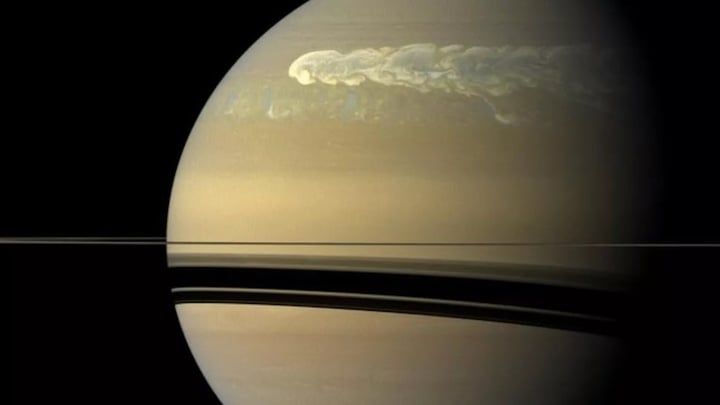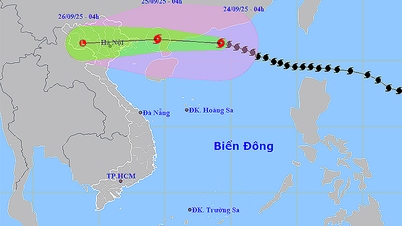Imagine a storm so large that its dark outline encircles the entire planet. Such terrifying “superstorms” are common on Saturn. This one, called the “Great White Spot,” occurs every 20 or 30 years in the planet’s northern hemisphere and rages on for months at a time.
Astronomers have detected six of these planet-wide storms sweeping across Saturn since 1876. The most recent occurred in December 2010, when NASA's Cassini spacecraft happened to be orbiting the planet, recording a full 200 days of the superstorm.

Close-up of the 2010 superstorm that formed in Saturn's northern hemisphere, circling the entire planet (Image: NASA/JPL-Caltech/Space Science Institute)
Now, new research into the 2010 storm has found that those 200 days of lightning were just a few drops in a much larger, weirder meteorological bucket.
The lingering effects of a superstorm that erupted on Saturn more than 100 years ago are still visible in the planet's atmosphere today, according to recent radio telescope scans, and they left behind persistent chemical anomalies that scientists can't fully explain.
In other words, long after a superstorm disappears from view, its impact on Saturn's weather lasts for centuries.
The implication, the study authors say, is that superstorms appear to drive some mysterious ammonia transport process that pulls ammonia from Saturn’s upper atmosphere deep into the lower atmosphere, possibly in the form of hail. The balls of ammonia fall into the atmosphere before evaporating back out. This chaotic process appears to continue for hundreds of years after a storm has dissipated, the researchers write.
While the mechanisms behind these atmospheric anomalies, and Saturn's superstorms in general, remain a mystery, further study of them could expand our understanding of how giant planets form, as well as what drives storm systems like Saturn's "Great White Spot" and Jupiter's even larger one.
(Source: Tien Phong/According to Live Science)
Source



![[Photo] Closing ceremony of the 18th Congress of Hanoi Party Committee](https://vphoto.vietnam.vn/thumb/1200x675/vietnam/resource/IMAGE/2025/10/17/1760704850107_ndo_br_1-jpg.webp)
































![[Photo] Nhan Dan Newspaper launches “Fatherland in the Heart: The Concert Film”](https://vphoto.vietnam.vn/thumb/1200x675/vietnam/resource/IMAGE/2025/10/16/1760622132545_thiet-ke-chua-co-ten-36-png.webp)












































































Comment (0)